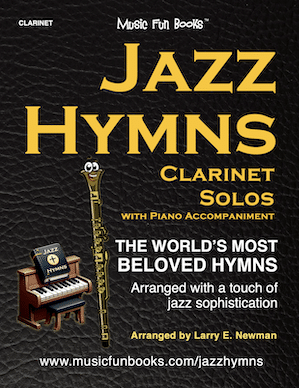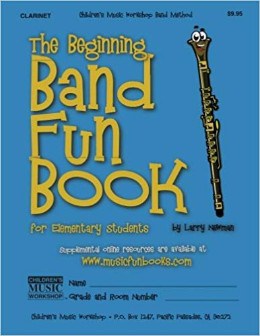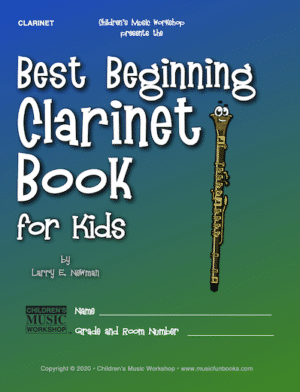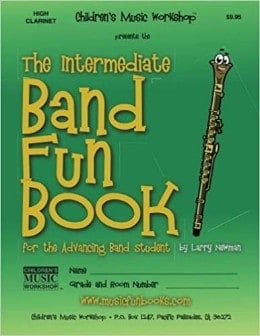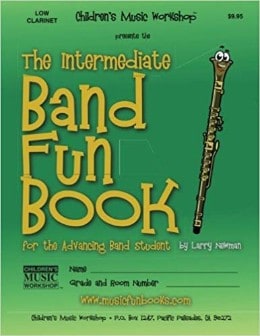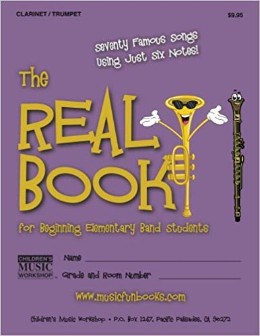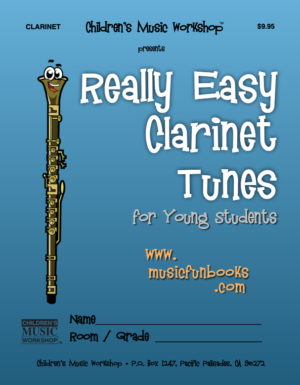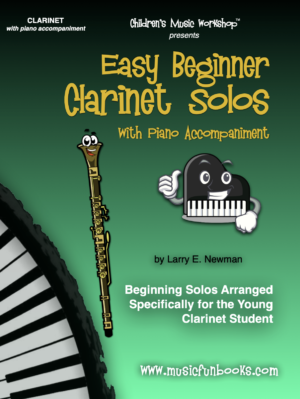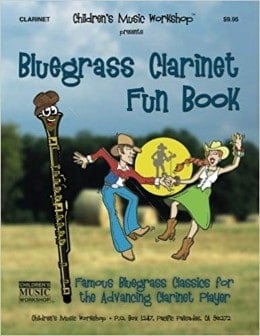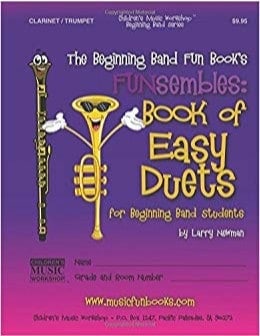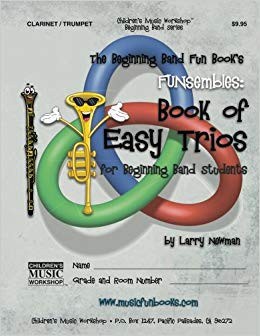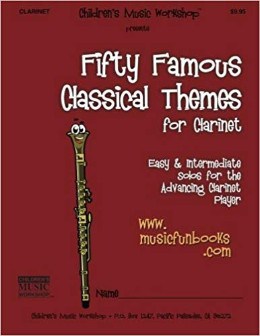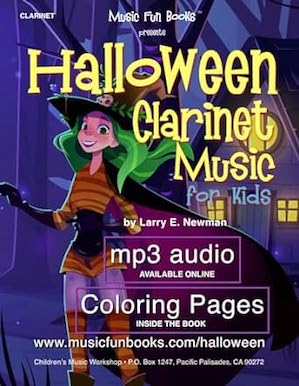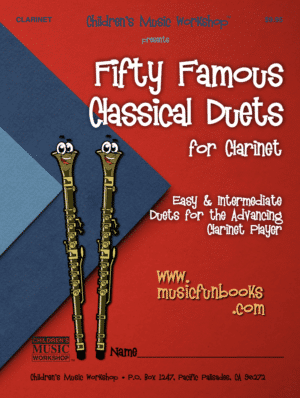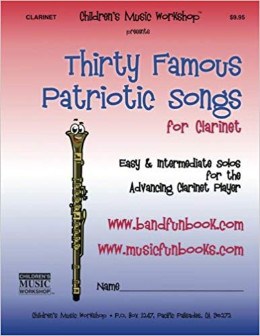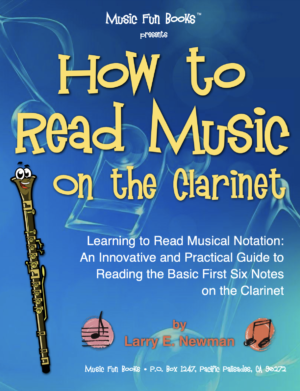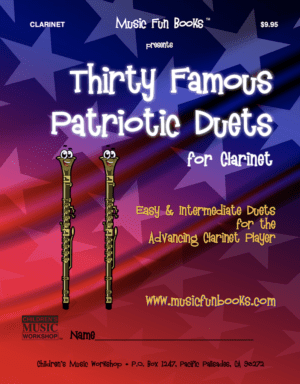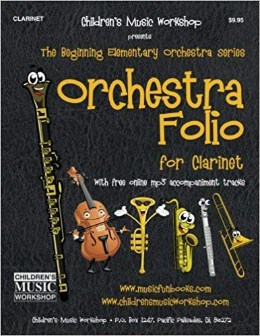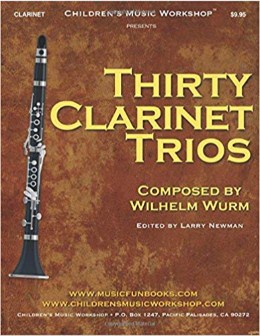Is the Clarinet a Good Instrument for a Child?
A clarinet for a child is a terrific starting point into making music. The size and weight of the instrument make the clarinet well-suited for children with small hands and, compared to many instruments, the clarinet has the advantage of being very portable.
There are many opportunities for young players of the clarinet, primarily in school music programs, including concert and marching bands, orchestras, jazz bands, clarinet choirs, and solo clarinet with piano.
The clarinet is often the instrument to play the melody in band, so children get a lot of pleasure by playing recognizable tunes.
Just as a florist can tell a rose from a daisy, a well trained musician will know if the melody to a song is correct.
Is the Clarinet Difficult to Play?
Producing a good sound on the clarinet is the first step in learning the instrument. This is not a difficult proposition if the student starts with good, basic equipment, and of course a competent teacher to explain the embouchure (how to shape the mouth to hold the mouthpiece) and the workings of the instrument.
When looking at the clarinet, it may appear a daunting task to learn because of the number of keys on the instrument. However, learning one key at a time, at a reasonable pace, helps to make the process of learning understandable.
A young player may be able to learn at a fast pace with 20 to 30 minutes of practice per day. If the student has some recognizable songs to learn and recordings to listen to, his or her interest and ability should increase very quickly.
History of the Clarinet
The clarinet has an exciting and diverse background in the history of music. As one of the most versatile instruments in the woodwind family (which also includes flutes, oboes, bassoons, and saxophones), the clarinet has been the instrument of choice for many brilliant performers in many styles of music, including jazz, classical and pop. Some of the most famous clarinetists to make history with the instrument include Benny Goodman, Richard Stoltzman, Eddie Daniels, Pete Fountain, and Jack Brymer. These artists have each developed unique styles of playing that illustrate the vast capabilities of the clarinet.
The tremendous musical range of tone and dynamics that a clarinet can produce range from the subtle, fluid lines of Debussy, to the gritty New Orleans style of Dixieland, to the fire-breathing, high-ranging passages in “Sing, Sing, Sing” by Benny Goodman. The clarinet has been featured on “Top 10” songs recorded by Billy Joel, Supertramp, Chicago, and many others.From a historical point of view, the clarinet is a relative newcomer compared to other woodwind and string instruments.
First developed in the late 1600s by J.C. Denner, the earliest clarinets had only two keys and a body of boxwood. Mozart was the first major composer who saw the true potential of the instrument, and penned a clarinet concerto, which even today is considered one of the greatest concertos ever written for any instrument.
After Mozart, many of the great composers wrote works for the clarinet, including Brahms, Beethoven, Von Weber, Copland, and many others.It wasn’t until the 1850s that the design of the clarinet began to take on its modern configuration of 17 keys, which helped facilitate difficult passages and make the instrument play more easily in tune.
Now is the time to buy or rent a student clarinet because clarinets are better today than they have been any time in history, as computerized design and production methods are being used to manufacture the instruments. They are made with greater consistency and higher precision, with tolerances to the thousandth of an inch.In the early 20th century, the clarinet found its way into early jazz, swing, and Dixieland music.
Most parents are very familiar with how to buy or rent a student clarinet – along with the sound of the clarinet, and many students can instantly recognize the famous beginning of Gershwin’s “Rhapsody in Blue”, or the soulful “Stranger on the Shore” recorded in the early 1960’s. Today, the clarinet is heard in all types of music, and has been especially prevalent in movie music, as well as through the music of jazz great Eddie Daniels, and the very popular classical artist Richard Stoltzman. Pete Fountain, the most famous Dixieland clarinetist, was even featured on the half-time show of the Super Bowl.
The Clarinet Family
When you want to buy or rent a student clarinet, you should be aware that there are several clarinets in the clarinet family. They range from the tiny E-flat clarinet, which is about 14 inches long, to the giant contrabass clarinet, which is taller than a seated adult. But the clarinet most often used in school band programs is the B-flat clarinet. Knowing how to buy or rent a student clarinet like this is critical. This is the most popular model, and is the same clarinet that is seen most often in solo performances and on television. Playing the larger clarinets is better left for older students who can handle the larger keys and weight of the instrument.
HOW TO BUY OR RENT A STUDENT CLARINET
Before you go to your local music store to buy or rent a student clarinet, talk to as many people as possible who have played, or have some understanding of the instrument. This may include band directors, students in the local high school band, private teachers, or professional musicians. Knowing how to buy or rent a student clarinet can save parents hundreds of dollars.
Their advice may be helpful, and it would even be better if you could bring them along when you go to the music store to help try out the instrument to make sure that it functions properly.
PLAN YOUR BUDGET
The first issue to consider when purchasing a clarinet is what your budget will allow. A good-quality, brand-new student clarinet may be purchased for about $400. An intermediate instrument may cost about $700 and professional clarinets are generally $1,000 and up. If this is more than what you are willing to spend, there are two options.
One is to buy a used instrument, which may cost very little, depending upon the quality or state of disrepair of the instrument.
The second option is to rent the instrument, which allows you to send back the instrument when the contract is up, or upgrade to a better instrument if you continue to play.
If you are going to purchase a used clarinet, you should seriously consider buying one from a reputable dealer. There are many potential problems that may occur with a used instrument, and it is important to have a company that will stand behind the purchase and make necessary repairs. A good dealer will often refurbish used instruments, and make them available for a reasonable price.The second part of the purchase, is to make certain that you have all of the necessary accessories to get started.
These include:
1. Clarinet reeds
2. Method books
3. Music stand
4. Cleaning swab
5. Cork grease
You should plan to spend $20 to $30 for these accessories, as they are essential to getting started with the instrument.
WHERE TO BUY YOUR CLARINET
There are basically three types of places to buy your instrument: the local music shop, a mail-order house, or a private party selling a secondhand instrument. Each has its benefits, but a very important consideration is service.You can take advantage of Children’s Music Workshop discount prices through The Instrument Place. Visit their website and order online!A clarinet consists of many moving parts, and occasionally needs minor repairs and adjustments, especially with young players carrying the instrument to and from school and other activities. If you can find a dealer near you who has a repair person on site, they can often correct minor problems while you wait. If you buy from a mail-order company, it is essential to make sure you know a local repair shop who can fix the instrument, or you may have to mail it back to the place you made the purchase in order to have repairs done.
TYPES OF CLARINETS
There are two types of clarinets available for students, wood and plastic. Usually the plastic clarinets are less expensive, often by $200 or more. When you look at a wood clarinet, you can see the grain in the wood. The plastic clarinet is usually shiny, although there are some matte finish plastic clarinets available.
There are distinct advantages for each of these types of clarinets. Wood clarinets are generally made of African Grenadilla wood, and provide a warmer, more professional sound than plastic. Professionals exclusively use wood clarinets, but plastic is more durable and can take more abuse especially from young students. Since wood expands and contracts with temperature changes, it must not be left in cold or hot temperatures for too long, as the wood will try to contract or expand, but the metal key-work will not. This could cause the instrument to crack, and could render the instrument unplayable, or in need of serious repair.
BRAND NAMES VS. OFF-BRANDS
Like purchasing any product, buying a well-known brand generally assures you of a good quality product, with a company that stands behind it. These instruments may cost more, but there often include better warranties and, if needed, parts will be more easily obtained. This does not mean that you cannot find an off-brand that is of equal quality, but you need to have someone who has a thorough understanding of the instrument to tell you if they are of the comparable quality to the better-known brand.
WHAT TO LOOK FOR
When you first open the clarinet case, you will notice five parts: the bell, the lower joint, the upper joint, the barrel, and the mouthpiece. Only the upper and lower joints have keys, whereas the bell, barrel and mouthpiece do not. If the instrument is brand-new, ask the dealer to put it together, and allow you to inspect it. Unless you have a person who can play the clarinet with you to play-test the instrument, look at the parts carefully and see if anything is bent or loose. Inspect the pads to make sure there is one in each key-cup. Then check to see that the end rings between the top and bottom joints, and on the bell and barrel joints are not loose.
If you are bringing another student clarinet player with you, be sure they bring their own reed and mouthpiece setup, and have them try to play the instrument. Have them play from the lowest notes to the highest, and ask them if there is any undue resistance. If the instrument has air-leaks from poorly seated or loose pads, the instrument will squeak when they reach a certain note (often younger students may squeak for other reasons, which is why it is better to have an older student come with you.)
WARRANTY, SERVICE, LOANERS
A reasonable warranty is important as in purchasing any product, and it is especially crucial with the clarinet since the instrument has many moving parts. Make sure that the dealer has service available for the instrument they sell, as a clarinet will need occasional adjustment and minor repairs (like replacing pads, and straightening bent keys.)
THE REED AND MOUTHPIECE
Among the most important parts of the clarinet are the reed, mouthpiece and ligature setup. These are what actually produce the sound of the instrument, so they must be of good quality in order to make the instrument easily playable for the young student.
The reed is a small piece of shaved cane that is the actual tone-generator for the instrument. Reeds are graded in strengths, usually from 1 to 5, and generally the higher the number, the stronger the reed. Most students begin on softer reeds, until the muscles in their cheeks are used to playing the instrument, at which time they can advance to harder reeds (harder reeds produce better tone quality, and greater access to the high registers of the instrument.)
The mouthpiece is what the reed is attached to by the ligature. It is placed in the player’s mouth between the top teeth, and with the bottom lip folded over the bottom teeth. The reed is held in position by a ligature, which is usually a metal or plastic band with one or two screws to hold the reed tight against the mouthpiece.
Often, the mouthpiece that is supplied with a student instrument is of very basic quality. An upgraded mouthpiece is an excellent investment, as it will help the student play more easily. It is important to choose a mouthpiece that is suitable for young players, which your music dealer can recommend.
The clarinet case is also very important. The clarinet is a delicate instrument, and can easily be damaged, so look for a sturdy case with latches that will not come open. Most cases come with the purchase of a new instrument, but when buying a used clarinet, it may be necessary to replace an older case to protect your investment.
CROSSING OVER TO OTHER INSTRUMENTS
The technique used to play the clarinet is also very similar to the saxophone and the flute, which is why many players are able to switch (or, as musicians say, “double” or “triple”) between these instruments. Often young players will learn on the clarinet first, and then add or switch to the saxophone or flute to broaden their musical experience and opportunities.
Have Fun
The clarinet can be a fun instrument to play, and gives a student an opportunity to perform with many types of musical ensembles. To keep music making fun, make sure that the instrument is in proper adjustment, and that you have all of the proper equipment as indicated earlier in this article. Listen to music that features the clarinet, and try to learn songs that you would like to play. There is a lot of satisfaction gained from performing with a school band, and this is a great place to start. Enjoy your learning experience.
Rick Kessel, author of “How to Buy or Rent a Student Clarinet,” is a clarinetist and a graduate of the Indiana University School of Music. Contributing to the preparation of this article were Larry Linkin, clarinetist and president/ CEO of the National Association of Music Merchants (NAMM), and Bernard Portnoy, former clarinetist of the Philadelphia Orchestra and professor of clarinet at Indiana University. Reprinted with permission of School Band and Orchestra magazinePlease visit them at www.sbomagazine
